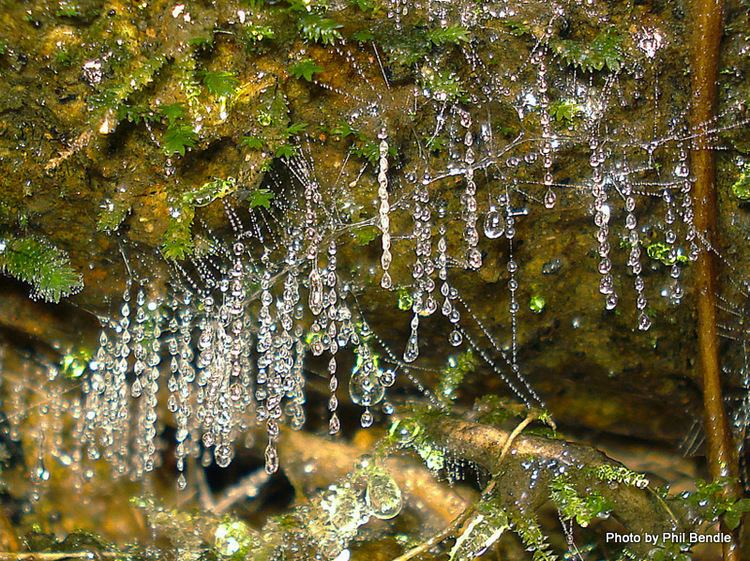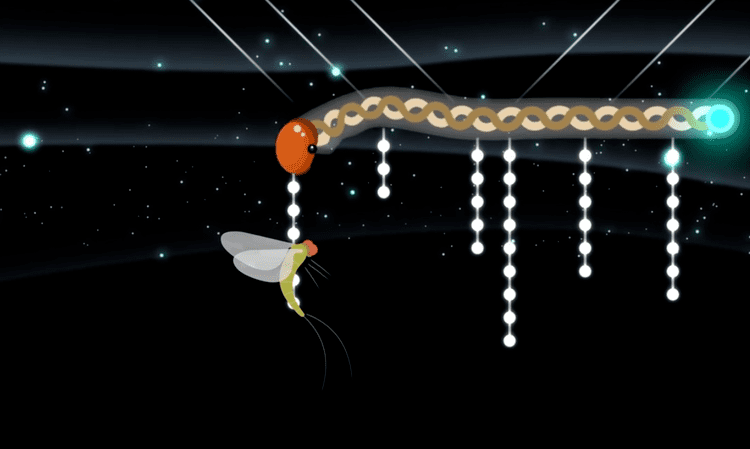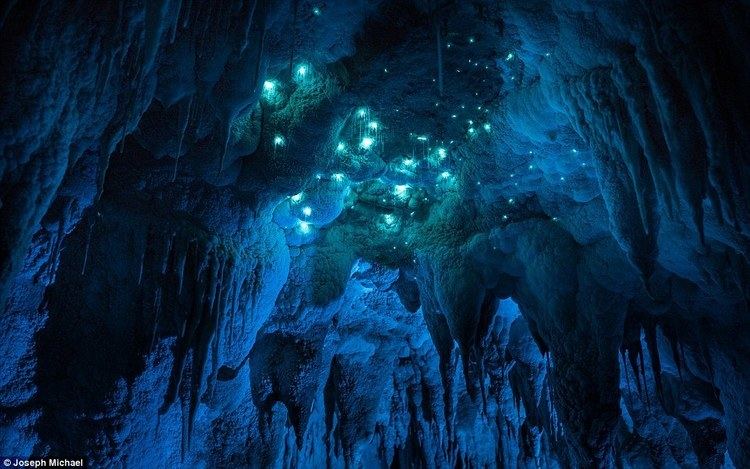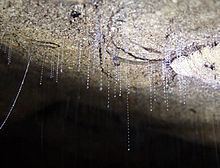Rank Species | Order Diptera | |
 | ||
Similar Arachnocampa, Keroplatidae, Mycetophilidae, Lampyris noctiluca, Firefly | ||
Arachnocampa luminosa flv
Arachnocampa luminosa, commonly known as New Zealand glowworm or simply glowworm, is a species of fungus gnat endemic to New Zealand. Both the larval stage and the imago are luminescent. The species is known to dwell in wet caves, grottoes and sheltered, humid places in forests. Its Māori name is titiwai, meaning "projected over water".
Contents

The species was first described in 1871 when collected from a gold mine in New Zealand's Thames region. At first it was thought to be related to the European glowworm beetle, but in 1886 a Christchurch teacher showed it was a larva of a gnat, not a beetle. The species was called Bolitiphila luminosa in 1891, before being renamed Arachnocampa luminosa in 1924.
Arachnocampa luminosa lite 2013
Distribution
Arachnocampa luminosa is found in both the North and the South Island and is generally widespread, although populations are isolated due to the lack of suitable habitat in areas where farming is intense and forests were cut down. The Waitomo Caves in the North Island and the Te Ana-au Caves in the South Island are the best known habitats, both caves having become popular tourist attractions.
Other known populations (North Island):

South Island:
Features

The species' life cycle starts with an egg, which hatches into a larva and then pupates into an adult fly. It spends most of its life in its larval form. The larval stage lasts about 6 to 12 months, depending on available food. The larva emerges from the egg only about 3 to 5 millimeters long, and through its life grows to about 3 centimeters. The body of the larva is soft while the head capsule is hard. When it outgrows the head capsule it moults, shedding its skin. This happens several time during its lifespan. At the end of the larva stage it becomes a pupa, hanging down from the roof of the cave on a short, silken thread. The pupa stage lasts about 1 or 2 weeks and it glows intermittently. The male almost stops glowing a few days before emerging, whereas the female's glow increases. The glow from the female is believed to be to attract a mate, and males may be waiting there when she emerges. Adult New Zealand Glowworms do not feed and live only a few days. Both males and females glow, but not as bright as larvae. The sole purpose of the adults is to mate, and for the female to lay eggs. Adult insects are poor fliers and so will often remain in the same area, building a colony of glowworms. The female lays a total of about 130 eggs, in clumps of 40 or 50, and dies soon after laying. The eggs hatch after about 20 days and the cycle repeats.
The larva spins a nest out of silk on the ceiling of the cave and then hangs down as many as 70 threads of silk (called snares) from around the nest, each up to 3 or 4 cm long and holding droplets of mucus. Snares built by forest-living specimens are much shorter, reaching a maximum length of 5 cm due to wind entangling longer snares.
Larvae glow to attract prey into their threads, perhaps luring them into believing they are outdoors, for the roof of a cave covered with larvae can look remarkably like a starry sky at night. A hungry larva glows brighter than one which has just eaten. The glow is the result of a chemical reaction that involves luciferin, the substrate; luciferase, the enzyme that acts upon luciferin; adenosine triphosphate, the energy molecule; and oxygen. It occurs in modified excretory organs known as Malpighian tubules in the abdomen.
Prey include midges, mayflies, caddis flies, mosquitos, moths, or even small snails or millipedes. When prey is entangled in a snare, the larva pulls it up by ingesting the snare and starts feeding. Cannibalism occurs when population densities are high or when adult flies entangle themselves in snares after hatching.
The larvae are sensitive to light and disturbance and will retreat into their nests and stop glowing if they or their snares are touched. Generally they have few predators. A species of harvestmen is known to prey on the New Zealand Glowworm in some caves. A fungus also affects the species; it gradually kills the larva. Fungus spores are spread by air movement, but since the larvae live out of the wind the spread of spores is limited. The greatest danger to glowworms is from human interference through habitat destruction.
